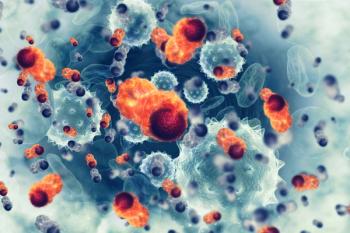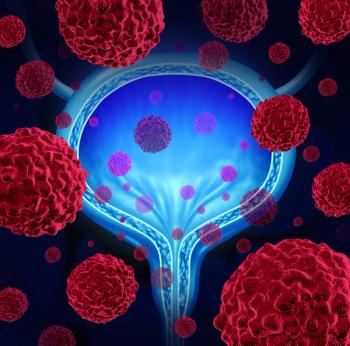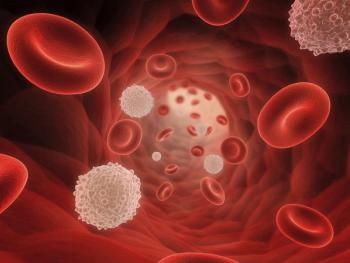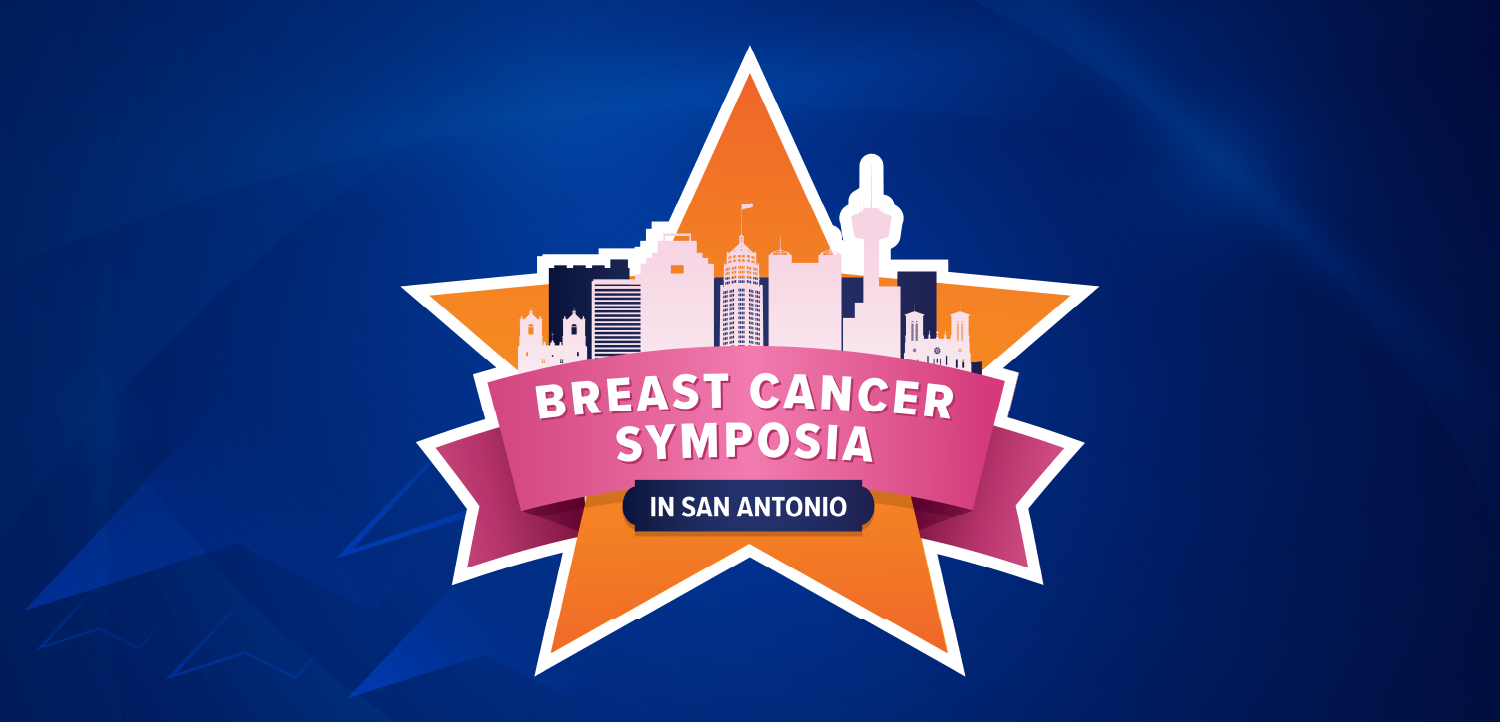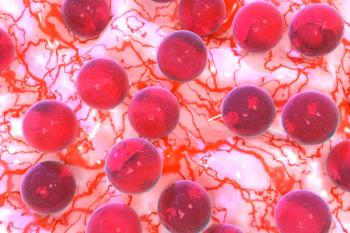
Novel Combo Suppressed Chemo-Associated Myelosuppression in Gastric/GEJ Cancer
SHR-1701 plus CAPOX chemotherapy elicited fewer chemo delays and dose reductions and improved AE data vs placebo plus CAPOX in HER2-negative gastric/GEJ cancer.
SHR-1701, a bifunctional agent targeting PD-L1 and TGF-ß, in combination with chemotherapy demonstrated the ability to suppress chemotherapy-associated myelosuppression in patients with HER2-negative gastric/gastroesophageal junction adenocarcinoma (GEJ), according to results from a multicenter, 2-part phase 3 trial (NCT04950322) presented at the 2025
At the data cutoff of May 20, 2024, the median treatment exposure for patients in the combination group for SHR-1701, capecitabine, and oxaliplatin (CAPOX) were 137.0 days (range, 65.5-251.5), 122.0 days (83.0-138.0), and 107.0 days (66.0-123.0), respectively. In the placebo/CAPOX group, median treatment exposure for placebo, capecitabine, and oxaliplatin was 127.5 days (62.0-190.0), 122.0 days (73.5-135.0), and 108.5 days (64.0-121.0).
Median treatment cycles for the SHR-1701/CAPOX group for SHR-1701, capecitabine, and oxaliplatin were 7 (IQR, 4-11), 6 (4-6), and 6 (4-6), respectively; for the placebo/CAPOX group median treatment cycles for placebo, capecitabine, and oxaliplatin were 6 (4-9), 6 (4-6), and 6 (4-6), respectively.
Median relative dose intensity for the SHR-1701/CAPOX group for SHR-1701, capecitabine, and oxaliplatin was 94.5%, 83.4%, and 91.1%, respectively; for the placebo/CAPOX group median treatment cycles for placebo, capecitabine, and oxaliplatin were 94.4%, 83.6%, and 90.6%.
Additionally, in the SHR-1701/CAPOX group and placebo/CAPOX group, treatment-related adverse events (TRAEs) leading to CAPOX delays were platelet count decreased (20.6% vs 32.0%), neutrophil count decreased (8.0% vs 11.7%), and white blood cell count decreased (7.1% vs 9.0%). TRAEs leading to CAPOX reductions in the SHR-1701/CAPOX and placebo/CAPOX groups were platelet count decreased (15.7% vs 17.8%), neutrophil count decreased (7.4% vs 10.1%), and white blood cell count decreased (1.9% vs 1.1%).
“SHR-1701 showed the capacity to suppress chemo-associated myelosuppression, as evidenced by: fewer chemo delays and dose reductions; lower frequency of any grade, grade 3 or higher, and serious treatment-related hematological toxicities, including decreased platelet count, decreased neutrophil count, and decreased [white blood cell] count,” lead study author Zhi Peng, MD, an associate professor at Beijing Cancer Hospital, Peking University, and principal investigator of the study wrote in the presentation.1
Patients were randomly assigned in a 1:1 ratio to 1 of 2 groups and received either 30 mg/kg of intravenous SHR-1701 (n = 364) or intravenous placebo (n = 366) given on day 1 every 3 weeks, both with CAPOX chemotherapy (1000 mg/m2 of oral capecitabine taken twice a day on days 1 to 14 every 3 weeks and 130 mg/m2 of intravenous oxaliplatin given on day 1 every 3 weeks). Randomization was stratified by PD-L1 expression status, ECOG performance status, and peritoneal metastasis status.
Eligibility criteria included being 18 years and older with HER2-negative, unresectable locally advanced or metastatic gastric/GEJ adenocarcinoma and no prior systemic treatment. Patients also had to have an ECOG performance status of 0 or 1 and at least 1 measurable lesion per RECIST v1.1.
Treatment-related decreased platelet counts of any grade occurred in 59.6% of the SHR-1701/CAPOX group and 68.3% of the placebo/CAPOX group (difference, –8.7%); of grade 3 or higher in 19.0% and 28.1%, respectively (difference, –9.1%); and of serious indication in 6.9% and 9.0%, respectively (difference, –2.1%).
Treatment-related decreased neutrophil count of any grade occurred in 44.8% of the SHR-1701/CAPOX group and 54.9% of the placebo/CAPOX group (difference, –10.1%); of grade 3 or higher in 12.1% and 16.4%, respectively (difference, –4.3%); and of serious indication in 0.5% and 0.8%, respectively (difference, –0.3%).
Treatment-related decreased white blood cell count of any grade occurred in 40.4% of the SHR-1701/CAPOX group and 51.6% of the placebo/CAPOX group (difference, –11.2%); of grade 3 or higher in 3.6% and 5.2%, respectively (difference, –1.6%); and of serious indication in 0.3% and 0.8%, respectively (difference, –0.5%).
Per the safety summary, in the SHR-1701/CAPOX group, 97.8% TRAEs of any grade occurred vs 98.4% in the placebo/CAPOX group; of grade 3 or higher occurred in 62.6% and 59.0%, respectively; serious TRAEs occurred in 34.9% and 24.0%; and serious TRAEs occurred in 34.9% and 24.0%. TRAEs led to discontinuation of study medication in 10.4% and 3.0%, respectively; SHR-1701/placebo was discontinued in 8.2% and 1.9%; CAPOX was discontinued in 4.4% of the SHR-1701/CAPOX group and 1.6% of the placebo/CAPOX group. TRAEs led to death in 1.9% and 1.1%, respectively.
Previously, the trial met its primary end point of superior overall survival for SHR-1701/CAPOX vs placebo/CAPOX for this population and for those with PD-L1 combine positive score of 5 or more and in the intent-to-treat population.
Reference
Peng Z, Wang J, Zhang Y, et al. Effect of SHR-1701 on chemotherapy (chemo)-induced myelosuppression: data from a phase 3 study in HER2-negative gastric/gastroesophageal junction adenocarcinoma (G/GEJA). J Clin Oncol. 2025;43(4):335 doi:10.1200/JCO.2025.43.4_suppl.335
Newsletter
Stay up to date on recent advances in the multidisciplinary approach to cancer.


